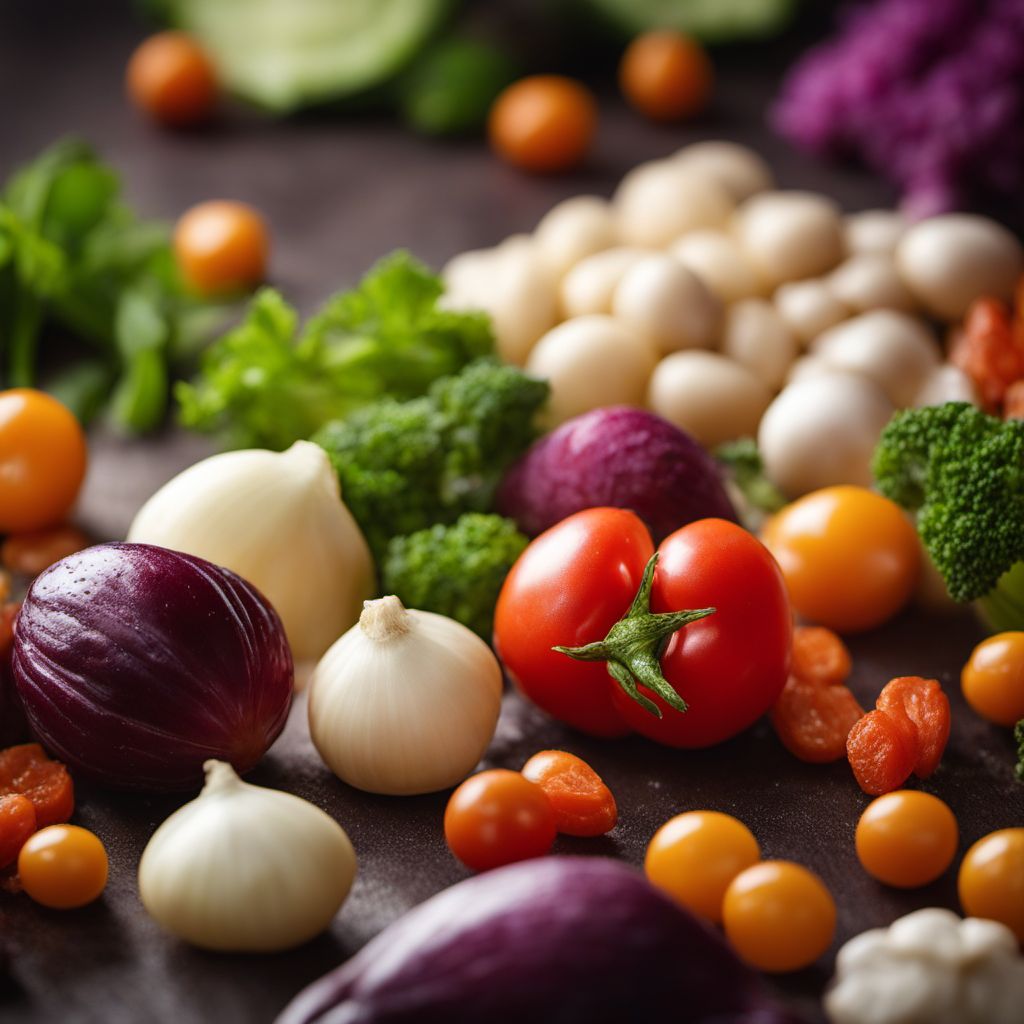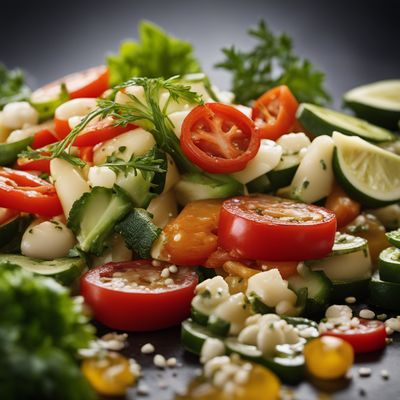
Ingredient
Mixed vegetables
Vibrant Medley: Exploring the Colors and Flavors of Mixed Vegetables
Mixed vegetables are a combination of different vegetables, such as carrots, peas, corn, green beans, and bell peppers. They offer a delightful mix of flavors and textures, with each vegetable contributing its unique characteristics. The vibrant colors of mixed vegetables add visual appeal to dishes, while their crispness or tenderness provides a pleasant mouthfeel.
Origins and history
The concept of mixed vegetables can be traced back to ancient times when civilizations began cultivating and consuming a variety of vegetables. Over time, different cultures developed their own versions of mixed vegetable dishes, incorporating locally available produce. Today, mixed vegetables are enjoyed worldwide and are a popular choice for adding nutrition and color to meals.
Nutritional information
Mixed vegetables are a nutritional powerhouse, providing a wide array of vitamins, minerals, and dietary fiber. They are low in calories and fat, making them an excellent choice for maintaining a healthy diet. The specific nutritional content may vary depending on the vegetables included in the mix.
Allergens
Mixed vegetables may contain allergens such as celery or soybeans, depending on the specific mix or any added sauces or seasonings. It is important to check the packaging or inquire about the ingredients used, especially for individuals with specific dietary restrictions or allergies.
How to select
When selecting mixed vegetables, look for a mix that includes a variety of colorful vegetables. Opt for fresh or frozen options, depending on availability and personal preference. Avoid mixes that appear wilted, discolored, or have a strong odor, as these may indicate spoilage.
Storage recommendations
To maintain the freshness and quality of mixed vegetables, store them in a sealed bag or airtight container in the refrigerator. Use them within a few days to ensure optimal taste and texture. Avoid overcooking the vegetables to retain their vibrant colors and crispness.
How to produce
Producing mixed vegetables involves washing, peeling, and cutting the vegetables into desired shapes or sizes. The vegetables can be cooked using various methods such as steaming, stir-frying, or boiling. The cooking time may vary depending on the specific vegetables included in the mix.
Preparation tips
Mixed vegetables can be used in a wide range of dishes, including stir-fries, soups, stews, salads, and pasta dishes. They can be steamed, roasted, or sautéed to preserve their natural flavors and textures. Mixed vegetables can also be used as a filling for wraps, omelets, or as a topping for pizzas.
Culinary uses
Mixed vegetables are a versatile ingredient that can be incorporated into various cuisines and dishes. They are commonly used in Asian stir-fries, Mediterranean salads, and Western-style casseroles. Mixed vegetables are also a popular choice for vegetarian or vegan meals, providing a colorful and nutritious alternative to meat-based dishes.
Availability
Mixed vegetables are widely available in supermarkets, grocery stores, and farmers markets across different regions and countries. They are cultivated in many parts of the world, making them accessible to a wide range of consumers.



